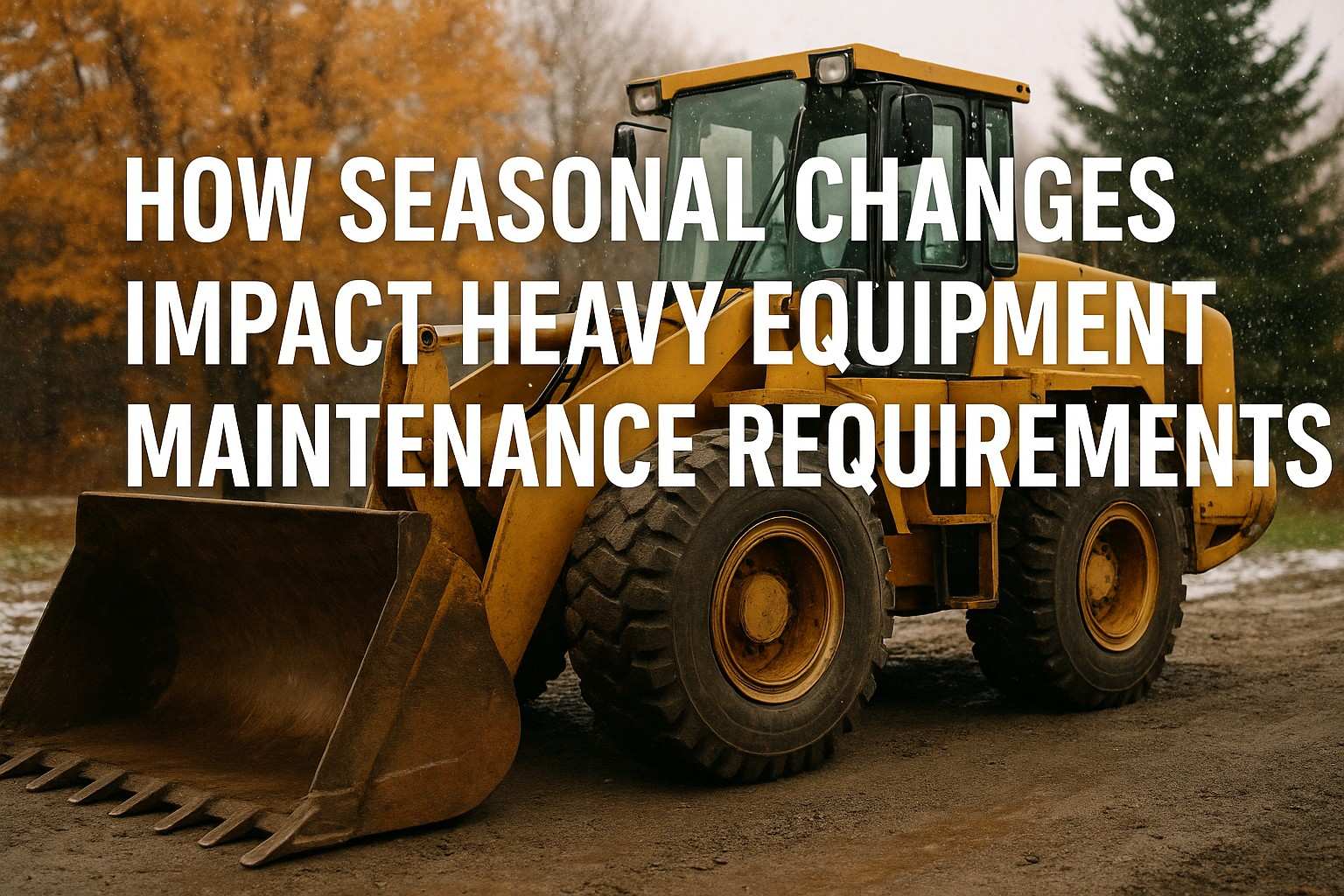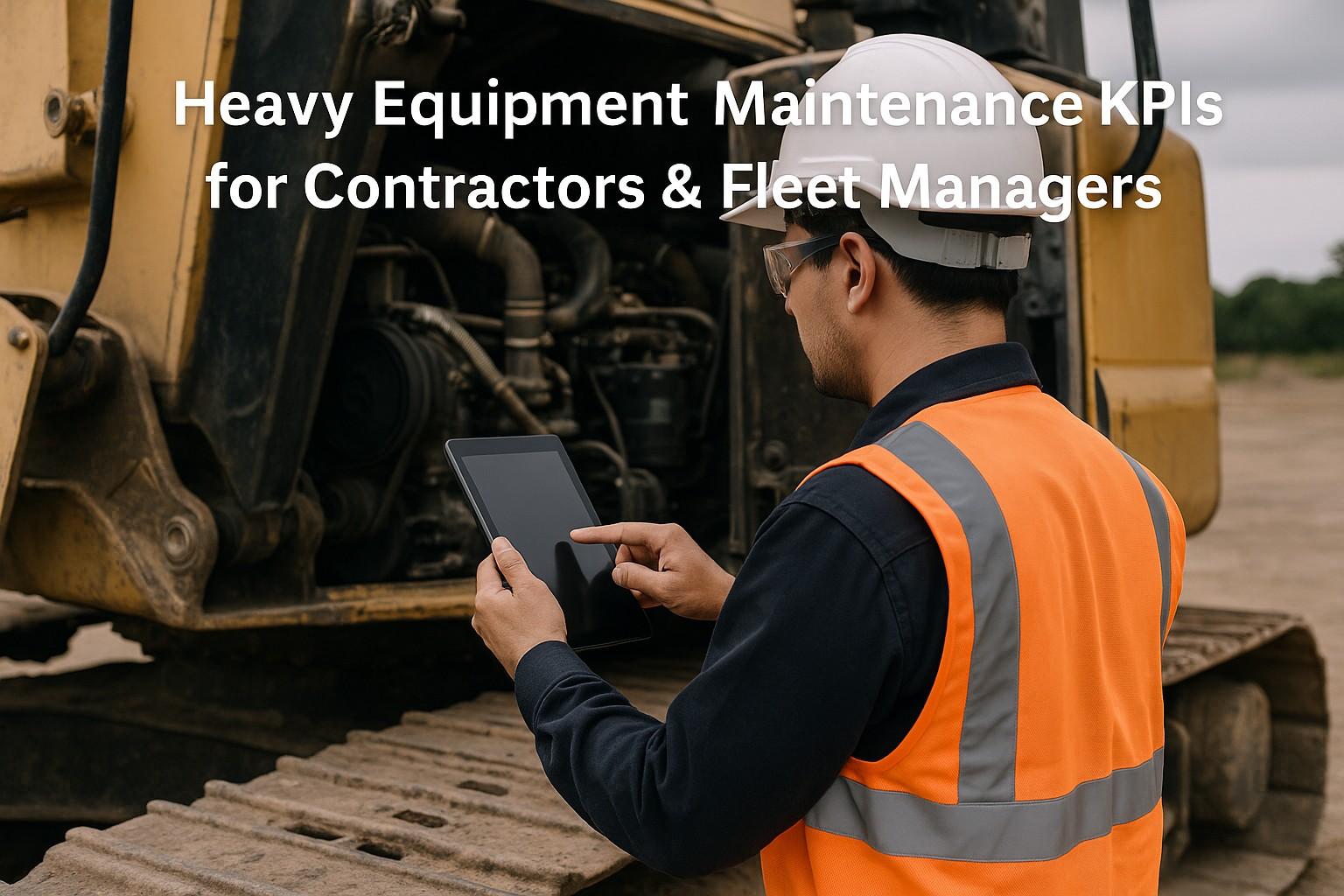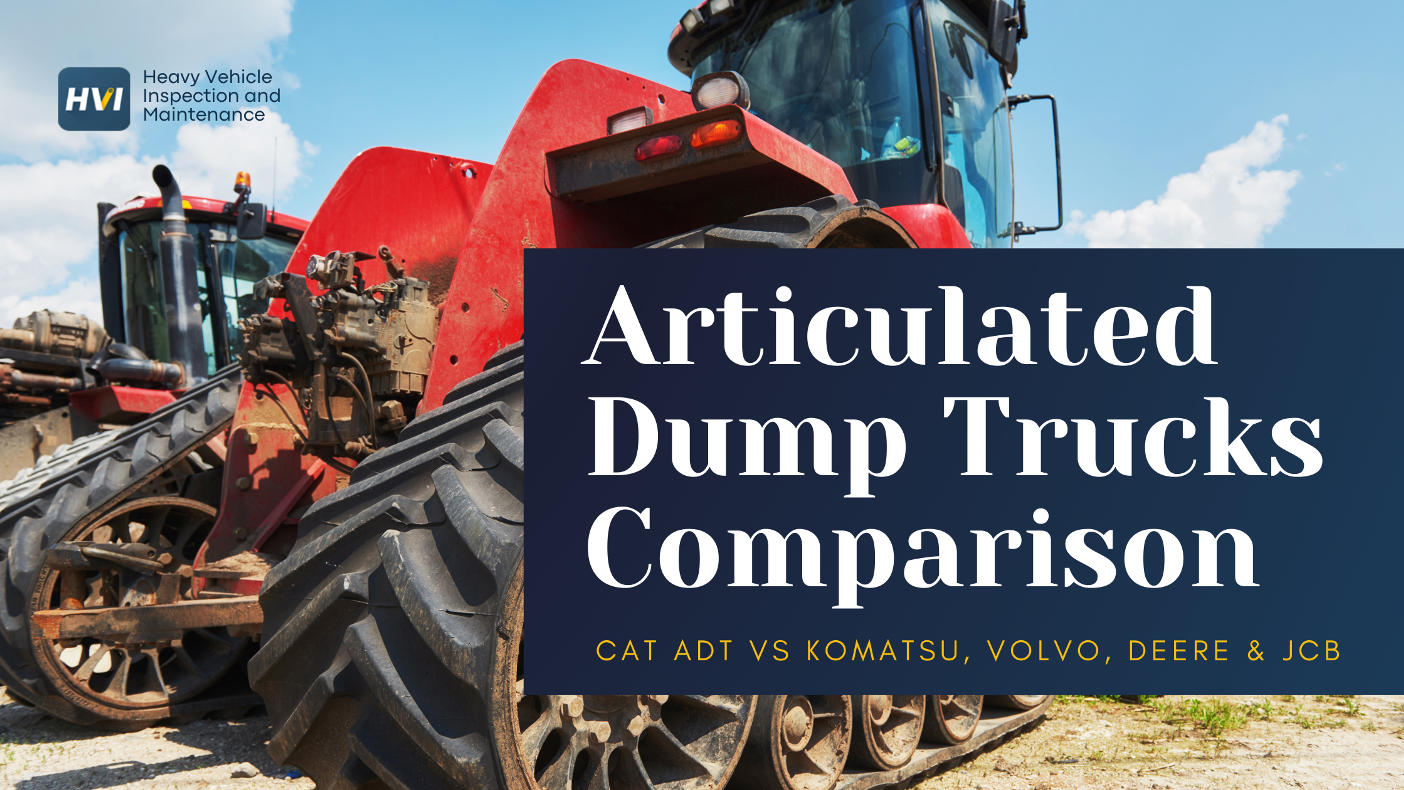Modern fleet inspection success requires integrated technology solutions. GPS tracking systems reduce violations by 27%, while fleet management software improves CSA scores by 31%. Telematics systems cut out-of-service violations by 52% with ROI in just 2.3 months. Predictive analytics prevents 58% of potential violations before they occur. For mixed fleets with commercial vehicles and earthmoving equipment, these technologies provide comprehensive compliance management, substantial cost savings, and significantly improved inspection outcomes across all vehicle types.
Table of Contents
- 1. GPS Tracking Systems
- 2. Fleet Management Software
- 3. Telematics Systems
- 4. Predictive Analytics
- AI Automation Agents
- Compliance Management Tools
- Industry Trends
- Our Solutions
- FAQs
In today's demanding transportation and construction industries, passing inspections isn't just about avoiding fines—it's essential for keeping your diverse fleet of on-road and off-road heavy vehicles operational and your business profitable. For operators managing mixed fleets that include commercial vehicles, earthmoving equipment, and specialized machinery, balancing operational efficiency with strict regulatory compliance presents unique challenges. The right technology solutions not only streamline operations but ensure your entire fleet consistently passes inspections, maintains compliance, and delivers substantial ROI.
Take the first step toward worry-free vehicle inspections by contacting our specialists for a free compliance consultation.
Start Your Free Trial1. GPS Tracking Systems: Your First Line of Defense
GPS tracking has become indispensable for mixed fleets looking to maintain inspection readiness across both on-road vehicles and off-road equipment. Modern systems transform how operators manage compliance by providing verifiable documentation of proper operation in various working environments.
What Today's GPS Systems Deliver
Today's advanced GPS technology goes far beyond simple location tracking for all equipment types:
- Real-time position monitoring with geofencing for route and worksite compliance
- Hours of Service (HOS) tracking for on-road vehicles and equipment operator hour logging
- Speed monitoring to demonstrate regulatory adherence for commercial vehicles
- Idle time tracking to reduce fuel costs fleet-wide for both on-road and off-road equipment
- Route and site verification for weight restrictions and environmental compliance
- Integration with AI-powered fuel sensors for consumption monitoring and emissions compliance
Inspection-Ready Documentation
When inspectors ask for records, comprehensive GPS tracking provides immediate proof of:
- Adherence to approved routes for commercial vehicles
- Proper operation within designated work zones for earthmoving equipment
- Compliance with restricted areas for all equipment types
- Complete vehicle and equipment inspection checklist fulfillment
- Fuel quality and consumption patterns that demonstrate emissions compliance
PROVEN RESULTS: According to the FMCSA's 2025 Safety Technology Impact Report, mixed fleets utilizing advanced GPS tracking systems experience 27% fewer roadside violations for commercial vehicles. Off-road equipment tracking reduced inspection failures by 32% with annual savings of $7,800 per heavy equipment unit.
2. Fleet Management Software: Centralizing Compliance Documentation
When integrated with GPS tracking, comprehensive fleet management software creates a complete compliance ecosystem that dramatically reduces inspection failures across all equipment types.
Critical Compliance Features
- Automated operator qualification and certification tracking for specialized equipment
- Maintenance schedule management with pre-inspection alerts for all vehicle types
- Electronic DVIRs for commercial vehicles and digital inspection reports for earthmoving equipment
- Centralized storage for registration, insurance, and inspection records across mixed fleets
- Violation and incident history monitoring for targeted improvement in all equipment categories
- AI Agent integration for automated documentation filing and compliance deadline management
Real-Time Compliance Dashboards
The most effective platforms offer customizable dashboards showing:
- Up-to-date compliance metrics for both on-road and off-road equipment
- Fleet efficiency data across all equipment types
- Maintenance records with specialized logging for earthmoving machinery
- Documentation needed for DOT audits and site safety inspections
- Environmental compliance reporting for off-road operations
- Fuel system performance metrics from integrated sensor networks
PROVEN RESULTS: The American Transportation Research Institute's 2025 study found fleets implementing comprehensive management software reported 39% reduction in roadside inspection violations and 31% improvement in CSA scores across all BASIC categories.
Additionally, the Construction Equipment Fleet Management Report 2025 showed that contractors with integrated fleet management systems experienced:
- 36% fewer equipment inspection failures
- 41% improvement in preventive maintenance compliance
- 28% reduction in earthmoving equipment downtime due to compliance issues
3. Telematics Systems: Preventing Inspection Failures Before They Happen
Telematics represents the integration of telecommunications and vehicle informatics, offering mixed fleet operators a proactive approach to inspection preparation for all equipment types.
Beyond Basic Monitoring
Advanced telematics systems continuously monitor:
| System | What It Monitors | Inspection Benefit |
|---|---|---|
| Engine diagnostics | Performance metrics across all equipment | Prevents mechanical failures |
| Fault code alerts | Emerging issues in both trucks and earthmoving equipment | Avoids breakdowns and work stoppages |
| Fluid systems | Consumption patterns and contamination | Ensures emissions and environmental compliance |
| Braking systems | Performance and wear on all vehicle types | Prevents safety violations |
| Hydraulic systems | Pressure and performance for off-road equipment | Maintains operational safety standards |
| Advanced fuel sensors | Fuel quality, temperature, and consumption anomalies | Ensures emissions compliance and prevents fuel-related violations |
Documented Compliance History
For inspections of all equipment types, telematics provides irrefutable documentation of:
- System performance over time for both on-road and off-road equipment
- Maintenance response to issues across the mixed fleet
- Operator behavior compliance in various working environments
- Inspection completion and follow-through for all vehicle types
- Fuel quality and consumption metrics that support environmental compliance
PROVEN RESULTS: The Commercial Carrier Journal's 2025 Fleet Technology Survey shows telematics systems reduced out-of-service violations by 52% within the first year, with ROI typically achieved within just 2.3 months.
4. Predictive Analytics: The Future of Inspection Readiness
For mixed fleet operators, predictive analytics represents the most advanced approach to ensuring inspection success by identifying and correcting issues before they trigger violations across all equipment types.
How Predictive Systems Work
These technologies analyze patterns across:
- Historical inspection results for both commercial vehicles and off-road equipment
- Component failure rates and timing for all machinery types
- Operator behavior patterns in various working environments
- Maintenance effectiveness across diverse equipment categories
- Seasonal and environmental challenges specific to different applications
- Fuel consumption anomalies that could indicate compliance issues
The Inspection Success Advantage
Predictive systems identify which vehicles and equipment face specific violation risks and initiate corrective actions before inspections occur.
PROVEN RESULTS: According to the Journal of Transportation Safety's 2025 study, fleets leveraging AI-powered predictive maintenance experienced 58% fewer out-of-service orders, 41% shorter inspection times, and 47% reduction in roadside and field repair costs.
The Construction Machinery Intelligence Report 2025 revealed that earthmoving equipment operators using predictive analytics saw:
- 53% reduction in major hydraulic system failures during inspections
- 44% decrease in unscheduled downtime due to compliance issues
- 39% improvement in first-time inspection pass rates
Implementation Roadmap
- Establish baseline compliance metrics across your entire fleet
- Identify your operation's common violation triggers for each equipment type
- Develop early warning systems for compliance issues across all machinery
- Create automated intervention protocols tailored to equipment categories
- Continuously refine prediction models based on inspection results from various authorities
Take the first step toward worry-free vehicle inspections by contacting our specialists at contact@heavyvehicleinspection.com or calling 855-304-5228 for a free compliance consultation.
SCHEDULE FREE DEMOAI Automation Agents: Revolutionizing Fleet Compliance Management
A transformative addition to modern fleet technology is the implementation of AI Automation Agents that handle routine compliance tasks with minimal human intervention. These advanced systems serve as virtual compliance officers for your mixed fleet.
Key AI Agent Capabilities
- Automated document filing and retrieval during inspections
- Proactive compliance deadline monitoring and notification
- Intelligent routing to avoid areas with heightened inspection activity
- Real-time regulatory change monitoring and impact assessment
- Automated driver coaching based on behavior patterns
- Dynamic inspection preparation checklists tailored to vehicle type and jurisdiction
Integration with Fuel Sensor Networks
Modern AI Agents seamlessly connect with advanced fuel sensor systems to provide:
- Continuous fuel quality monitoring for emissions compliance
- Automated detection of potential fuel system tampering
- Fuel consumption pattern analysis to identify potential mechanical issues
- Automated refueling scheduling to prevent low-quality fuel purchases
- Emissions compliance forecasting based on fuel system performance
PROVEN RESULTS: According to the 2025 Fleet Technology Automation Report, operations implementing AI Agent technology saw 43% reduction in administrative compliance workload and 67% faster response to documentation requests during inspections.
The Fifth Essential: Comprehensive Compliance Management Tools
While the four technologies above form your foundation, specialized compliance software creates a complete inspection success system for your mixed fleet. These platforms specifically address:
- Operator certification tracking for specialized equipment
- IFTA compliance for on-road vehicles
- MSHA compliance for off-road equipment in certain applications
- DVIR compliance and inspection workflows for commercial vehicles
- E-log compliance and hours-of-service tracking
- Environmental compliance for off-road operations
- Hazardous materials documentation
- Multi-jurisdiction compliance management
PROVEN RESULTS: The 2025 Fleet Compliance Benchmark Report found mixed fleets using integrated compliance management tools saw 33% improvement across all regulatory categories within the first four months.
Industry Trends Shaping 2025
Universal Equipment Identification
The 2025 Global Equipment Standard initiative now enables seamless tracking across mixed fleets, with 87% of new equipment shipping with standardized telemetry interfaces.
AI Integration
According to McKinsey's 2025 Technology Outlook, 67% of large mixed fleets now use AI-enhanced management systems, predicting inspection issues with up to 89% accuracy.
Remote Inspections
Electronic pre-screening technologies reduced physical inspections by 31% for on-road vehicles and 27% for earthmoving equipment, while simultaneously increasing violation detection.
Advanced Fuel Sensor Networks
The 2025 Fuel Systems Compliance Report indicates fleets with advanced fuel sensor networks experience 34% fewer emissions-related violations and save an average of 11.7% on fuel costs.
Ensure Inspection Success with Heavy Vehicle Inspection Solutions
Get complete control over your mixed fleet's inspection readiness with our cutting-edge technology. Our integrated solutions deliver:
- Comprehensive inspection preparation for both commercial vehicles and off-road equipment
- Reduced violation risks across all machinery types
- Improved compliance scores with multiple regulatory bodies
- Maximum uptime for your entire fleet
- Automated compliance management through AI Agent technology
- Advanced fuel system monitoring and optimization
Industry-Proven Results
Our systems are trusted by fleet directors, equipment managers, and compliance officers across the transportation and construction industries. Our team of former DOT inspectors and equipment safety specialists provides personalized recommendations based on your specific operational needs.
The National Private Truck Council and Association of Equipment Management Professionals' 2025 Benchmarking Surveys revealed mixed fleets implementing all four technologies experienced:
- 15-21% reduction in fuel costs across all equipment types
- 29% improvement in operator retention
- 26% increase in overall fleet efficiency
- 43% fewer reportable accidents and incidents
- 37% reduction in off-road equipment compliance violations
Take the first step toward worry-free inspections by contacting our specialists at contact@heavyvehicleinspection.com or calling 855-304-5228 for a free compliance consultation.
SCHEDULE FREE DEMOTop 5 Most-Searched Questions About Fleet Inspection Technology
1. What technologies help commercial vehicles pass DOT inspections?
Four essential technologies proven to significantly improve DOT inspection outcomes are GPS tracking systems, fleet management software, telematics systems, and predictive analytics. According to the FMCSA's 2025 Safety Technology Impact Report, GPS tracking alone reduces violations by 27%, while the complete technology stack can reduce out-of-service orders by up to 58%. These systems provide real-time compliance monitoring, automated documentation, preventive maintenance alerts, and predictive issue detection to address potential violations before inspections occur. For mixed fleets including off-road and earthmoving equipment, specialized compliance modules ensure all vehicle types meet their specific regulatory requirements.
2. How much can fleet management software reduce roadside inspection violations?
According to the American Transportation Research Institute's 2025 study, comprehensive fleet management software reduces roadside inspection violations by 39% for commercial vehicles. For earthmoving equipment and off-road machinery, the Construction Equipment Fleet Management Report 2025 indicates a 36% reduction in inspection failures. These improvements stem from the software's ability to automate driver qualification management, track maintenance schedules with pre-inspection alerts, manage electronic DVIRs, centralize compliance documentation, and monitor violation history. The most effective systems integrate with telematics and GPS tracking to create a comprehensive compliance ecosystem tailored to specific inspection requirements for each vehicle type.
3. What is the ROI of implementing telematics for heavy vehicle inspection compliance?
Telematics systems deliver among the fastest ROI for inspection compliance technology. The Commercial Carrier Journal's 2025 Fleet Technology Survey shows telematics reduced out-of-service violations by 52% with ROI typically achieved within 2.3 months for commercial vehicles. For earthmoving equipment, the Heavy Equipment Digital Transformation Report 2025 indicates a 47% reduction in inspection-related downtime with ROI in approximately 2.8 months. Beyond compliance benefits, these systems provide measurable returns through reduced fuel costs (15-21%), improved operator retention (29%), increased fleet efficiency (26%), and fewer reportable accidents (43%). For mixed fleets operating both on-road and off-road equipment, telematics offers unified compliance management across diverse regulatory frameworks.
4. How does predictive analytics prevent heavy vehicle inspection failures?
Predictive analytics prevents inspection failures by analyzing patterns in historical data to identify potential issues before they cause violations. The technology examines inspection results, component failure rates, operator behavior, maintenance effectiveness, and seasonal compliance patterns. According to the Journal of Transportation Safety's 2025 study, fleets using AI-powered predictive maintenance experienced 58% fewer out-of-service orders, 41% shorter inspection times, and 47% reduction in roadside repairs. For earthmoving equipment, predictive analytics reduced major hydraulic system failures during inspections by 53% and improved first-time inspection pass rates by 39%. Implementation follows a five-step process: establishing baseline metrics, identifying violation triggers, developing early warning indicators, creating intervention protocols, and continuously refining prediction models.
5. What compliance management tools do mixed fleets need for DOT and off-road equipment inspections?
Mixed fleets require comprehensive compliance management tools that address both DOT requirements for commercial vehicles and specialized regulations for off-road equipment. Essential components include: operator certification tracking for specialized machinery, IFTA compliance for on-road vehicles, MSHA compliance for certain off-road applications, electronic DVIRs, e-log compliance, environmental compliance monitoring, hazardous materials documentation, and multi-jurisdiction regulatory management. The 2025 Fleet Compliance Benchmark Report shows mixed fleets using these integrated tools achieved 33% improvement across regulatory categories within four months, while the Off-Highway Equipment Compliance Survey 2025 demonstrated 38% improvement in inspection outcomes for earthmoving equipment. Modern systems now feature universal equipment identification, AI-powered compliance forecasting, and remote inspection capabilities to streamline the process across diverse fleet types.
Additional FAQs
Q: How quickly can I implement these technologies across my mixed fleet?
A: Most systems can be fully operational within 2-4 weeks for commercial vehicles and 3-6 weeks for off-road equipment, with initial setup completed in as little as 7-10 days.
Q: Does the system work differently for earthmoving equipment versus on-road vehicles?
A: Yes, our systems are customized by equipment type, with specialized monitoring for hydraulic systems, operating environments, and specialized inspection requirements for off-road equipment.
Q: Which technology provides the fastest ROI for mixed fleets?
A: According to current data, telematics typically delivers the fastest return for commercial vehicles (2.3 months), while predictive maintenance shows the quickest ROI for earthmoving equipment (3.1 months).
Q: How do these systems handle equipment that moves between different regulatory jurisdictions?
A: Our compliance management tools automatically track location and apply the relevant regulatory frameworks, ensuring your equipment meets the specific requirements wherever it operates.
Q: What improvement in inspection outcomes can I expect for my earthmoving equipment?
A: Based on the 2025 Off-Highway Equipment Compliance Survey, operators using integrated technologies see an average 38% improvement in inspection outcomes within the first six months.
Q: How do AI Agents help with compliance management for mixed fleets?
A: AI Agents automate routine compliance tasks including document filing, deadline monitoring, regulatory change alerts, and driver coaching. They can integrate with fuel sensor networks to monitor emissions compliance and reduce administrative workload by up to 43% according to the 2025 Fleet Technology Automation Report.
Q: What benefits do advanced fuel sensors provide beyond basic fuel monitoring?
A: Advanced fuel sensors monitor fuel quality, temperature, and consumption patterns to ensure emissions compliance, detect potential tampering, identify mechanical issues before they cause failures, and optimize refueling schedules. Fleets using these systems report 34% fewer emissions violations and 11.7% fuel cost savings.
Q: Besides inspection success, what other benefits do these systems provide for construction equipment?
A: The Construction Equipment Fleet Management Report 2025 shows these technologies help optimize equipment utilization by 32%, reduce maintenance costs by 27%, and extend equipment lifecycle by up to 24%.
[Download our free guide: "The Complete Inspection Success Guide for Mixed Fleet Operators"]




